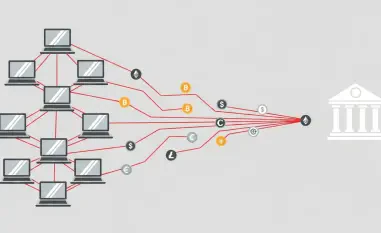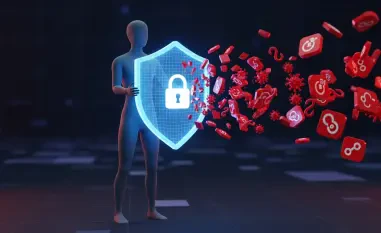Recent advisories issued by the FBI have unveiled the growing threat posed by a sophisticated cybercrime network known as The Com, short for The Community. This criminal consortium includes an alarming number of minors and is credited with a series of illicit actions spanning from elaborate online hacks to real-world crimes. Its divisive structure comprises three notable branches: Hacker Com, IRL Com, and Extortion Com, each with its own niche in the flurry of illegal activities. These threats have prompted the FBI to urge increased vigilance, particularly among individuals responsible for the safety of minors.
The Complex Terrain of Cybercrime
Hacker Com: A Web of Digital Intrigue
Hacker Com, one of the integral branches of The Com, is deeply entrenched in the folds of digital delinquency. Its activities often revolve around high-level cyber offenses, including ransomware schemes, SIM swapping, cryptocurrency theft, and phishing. Many of these operations function under ransomware-as-a-service frameworks, which facilitate the deployability of technologically advanced attacks. Members of Hacker Com don’t shy away from broadcasting their success, boasting substantial financial gains procured through digital currency thefts. SIM swapping, a tactic employed to bypass two-factor authentication, is commonly used by Hacker Com members to gain unauthorized access to victims’ personal accounts and sensitive data.
Cryptocurrency theft, which capitalizes on the anonymity of digital wallets, has been an attractive lure for these young offenders who are increasingly adept at navigating digital landscapes. The sophistication of their operations mirrors the continuous evolution of technological security measures. With the collective knowledge of its members, Hacker Com remains a quintessential example of the modern-day cyber threat landscape. As the line between virtual and tangible espionage continues to blur, it highlights the transformative nature of cybercrime, where digital savvy can circumvent traditional security apparatuses.
IRL Com: Bridging Digital and Physical Crime
IRL Com, another critical component of The Com, acts as a bridge between digital mischief and real-world criminal antics. While it might seem far-fetched to connect online criminal acts with tangible violence, IRL Com has defied these norms by coordinating a range of real-world misdeeds. From orchestrating violent acts like kidnappings to perpetrating armed robberies, its arsenal of crimes is as extensive as it is intricate. Young members utilize their understanding of SIM swapping to unearth sensitive information, setting the stage for real-life criminal engagements.
These acts are not isolated instances but are part of a calculated approach where digital maneuvers, such as data exfiltration, act as preliminary strikes leading to physical actions. The inclusion of minors in such operations is particularly concerning because they demonstrate a startling blend of knowledge and naiveté. Their participation is often fueled by peer influence or the prospect of easy financial gain, yet it opens doors to the dangerous world of crime. The rise of IRL Com signifies a troubling trend where cyber talents are being misdirected toward violent physical enterprises.
The Manipulative Mechanisms of Extortion
Extortion Com: Exploitation in the Digital Age
Extortion Com, a particularly distressing arm of The Com, preys on young, vulnerable targets by weaving promises with threats. This subgroup largely focuses on minors, especially young girls, exploiting the seamless connectivity offered by modern technology. Threats of doxing and potential harm serve as coercive tools, compelling victims into compliance. What differentiates Extortion Com from others is its reliance on emotional manipulation, leveraging social platforms to extend its reach and reinforce its influence.
The syncretic collaboration observed between Extortion Com and other facets of The Com only heightens the level of menace they pose. The manipulation process begins by establishing ostensibly harmless connections before escalating to demands backed by threats of exposure or violence. This exploitation is made possible by an over-reliance on digital connectivity and the tendency for young users to share personal details online. Victims are caught in a web of deceit and fear, making intervention by authorities and guardians arduous but crucial.
Protecting the Vulnerable: Educational and Preventive Measures
The orchestrated endeavors of The Com have prompted the FBI to accentuate preventive efforts to safeguard minors. The pervasive nature of their malpractices requires a robust response, particularly from parents, educators, and community leaders. Ensuring that minors are educated about the risks associated with oversharing personal data online is paramount. Moreover, implementing precautionary steps such as multi-factor authentication can significantly hinder unauthorized access to sensitive accounts. The collaborative effort of community guardians can thwart the recruitment of minors into these illicit groups.
As technology continues to deepen its roots in the social fabric, the importance of instilling a culture of vigilance cannot be overstated. Encouraging those under one’s care to approach online engagements with caution and skepticism is vital to curbing the influence of The Com. By building awareness around the strategies used by extortionists and hackers, a collective shield emerges, capable of confronting the complexities presented by modern cybercrime. Educators and guardians are urged to take initiative in shaping a more aware and prepared generation, equipped to navigate the digital realm responsibly.
Navigating the Digital Age Responsibly
Recent advisories from the FBI highlight the escalating threat from a sophisticated cybercrime network dubbed The Com, which stands for The Community. This criminal alliance has been implicated in numerous illegal activities, and disturbingly, it involves a significant number of minors. The Com is linked to a range of crimes, from intricate online hacks to actual physical offenses. Its hierarchically divided organization features three distinct branches: Hacker Com, IRL Com, and Extortion Com, each specializing in specific illicit operations. Hacker Com might focus on digital invasions, IRL Com could be involved in crimes committed in real life, and Extortion Com likely concentrates on threats or intimidation to procure valuables or information. These developments have led the FBI to recommend heightened vigilance, especially among those who oversee the protection of minors. The involvement of youth calls for proactive measures to safeguard young individuals from this rising tide of criminal activity.













